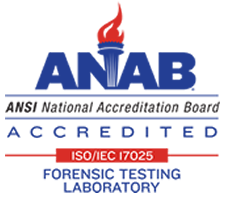The Forensic Chemistry Section
Evidence Submission: Mon – Thu 8am – 4pm, Friday 8am to 12pm (Lunch 12:30pm- 1:30pm)
Michael Duschenchuk, Forensic Laboratory Director
Tel: 207-287-1708
Email: Michael.Duschenchuk@maine.gov
Appointments must be made prior to submission or return of any Seized Drug or Toxicology Evidence.
HETL Forensic Chemistry Section Evidence Handling Guide (PDF)
To order blood or urine collection kits please e-mail: Valerie.J.Leathers@maine.gov
Please direct requests for case activation, discovery requests and subpoenas to the following accounts:
Case Activation Forms (for seized drug cases): ActivationForm.HETLForensics@maine.gov
Discovery Requests: Discovery.HETLForensics@maine.gov
Subpoenas: Subpoena.HETLForensics@maine.gov
The Forensic Chemistry Section of the Health and Environmental Testing Laboratory has a rich tradition, dating back to the early 1950's. In 1954, Robert Ericson helped establish the Toxicology Unit in the Chemistry Section under the old Division of Sanitary Engineering. Over the course of his 30-year career, Mr. Ericson developed a program that provided services for numerous local police departments, federal agencies, the Maine Department of Public Safety and the Maine State Police.
The tradition established by Robert Ericson continues today. The mission of the Forensic Chemistry Section is to provide accurate, reliable, timely, and state of the art scientific analysis and subsequent expert testimony in the areas of controlled substances and toxicology. The service is provided primarily to Criminal Justice Agencies of the State of Maine in regard to evidence submitted by them, although the Forensic Director may authorize the occasional acceptance of other work related to governmental agency investigations.
After five years of hard work and preparation, the Forensic Chemistry Section of the Maine Health and Environmental Testing Laboratory received accreditation from The American Society of Crime Laboratory Directors/Laboratory Accreditation Board (ASCLD/LAB), now ANAB, on December 13, 2004 in the areas of Controlled Substances and Toxicology (blood alcohol and urine drugs). The laboratory has held continuous accreditation with ANAB, which was most recently renewed on January 9, 2020 and updated to include blood drug testing.
ANAB offers accreditation to forensic laboratories that exhibit strict compliance to a large number of rigorous quality standards. The accreditation program is voluntary and open to any crime laboratory. The program's criteria address all areas of the laboratory's operations including management, personnel training and qualifications, technical operations, evidence handling, proficiency testing, lab security, and health and safety. Compliance to these standards is assessed through a comprehensive and thorough inspection performed by an external team of ANAB trained inspectors.
The Forensic/Chemistry Section is comprised of two units: Solid Dose Drug Chemistry, and Toxicology.
Solid Dose Drug Chemistry Unit
The Drug Chemistry Section identifies controlled substances seized by law enforcement officers. The evidence analyzed is usually presented in the form of pills, powders and plant material. The scientists in this section use sophisticated instruments and techniques to identify various drugs such as marijuana, cocaine, heroin, and fentanyl.
Testing methods for the identification of controlled substances include: a series of color and microscopic tests; thin layer chromatography; infrared spectrophotometry; and gas chromatography/mass spectrometry.
Chemists provide expert witness testimony, presenting and defending their findings in Courts throughout the State of Maine.
Toxicology Unit
The Toxicology Unit is responsible for the analysis of blood and urine samples. Blood samples are analyzed for the presence of alcohol and the alcohol level present in the sample is determined by headspace gas chromatography analysis.
Blood and urine samples are screened for the presence of drugs. If the sample is positive on the screening test, an attempt to identify and confirm the presence of the drug is made using a liquid chromatography/tandem mass spectrometry for blood samples and a gas chromatograph/mass spectrometer for urine samples. Blood drug compounds and reporting limits can be found in the blood drug procedures found on the blood drug page.
In addition, the unit maintains the State's Alcohol Breath Testing program and performs calibration checks on the instruments to insure the breath testing devices are functioning properly. The section also conducts and facilitates necessary repairs to the instruments and provides semi-annual on-site approvals of all the States instruments.


